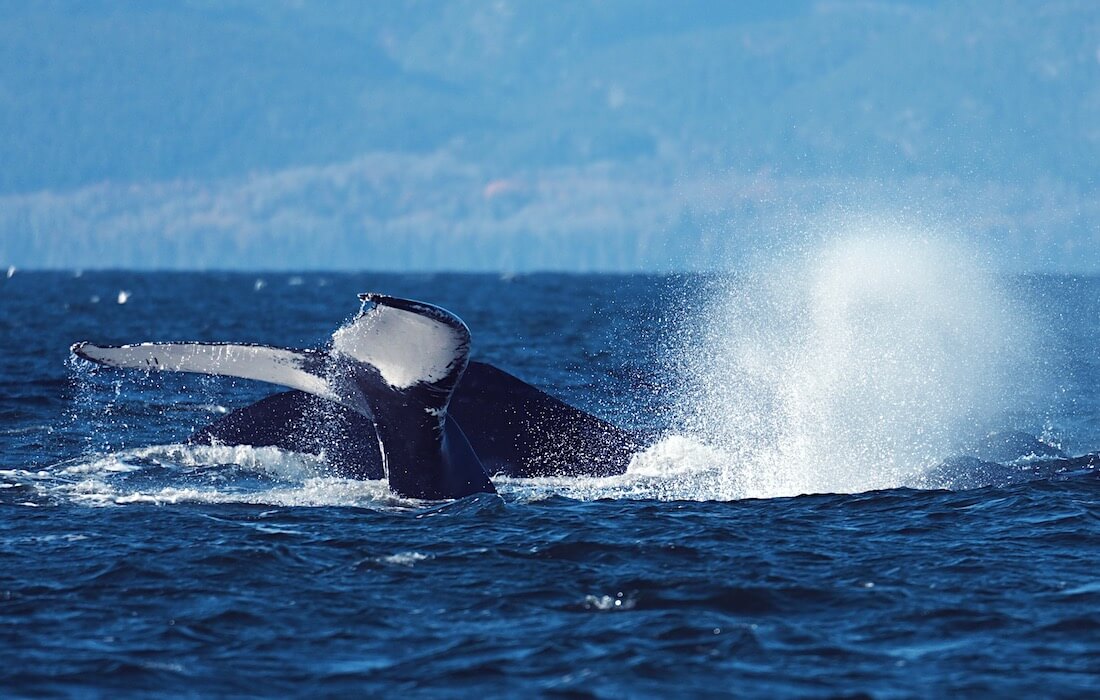The Astonishing Miss Frontenac
This week, fog forced us to work once again in the Saguenay, but luck is on our side, as belugas have been seen daily in the mouth of the Saguenay. THE encounter of the week occurred at Pointe de l’Islet, in fact, just a stone’s throw from our offices at the Marine Mammal Interpretation Centre (CIMM). The bow of our boat turned into the current, we stayed with the belugas for over an hour. The downflow was quite strong at more than 7 knots, and yet the belugas were treading water. Why in the world might they be expending all that energy just to keep treading water like this?
Off to the side of the group, we recognize Miss Frontenac. This is the first time we’ve seen her this summer! We had been eager to encounter her again. Adopted by the Château Frontenac in 2008, she is the first beluga we have ever tracked since birth (2004). She had her first calf in the summer of 2014 and we saw her almost ten times last summer, always with a bleuvet, or a young second-year beluga. Her first calf thus survived its first year.
Surprise! Miss Frontenac is once again accompanied by a newborn this summer. We saw her several times with the calf this week. According to our resources, females can give birth once every three years. Gestation lasts 14 months and nursing, at least 24 months. As it is assumed that lactating females are not fertile, a complete “normal” reproduction cycle thus takes three years in theory. But perhaps not for everyone! If the calf accompanying Miss Frontenac this week is indeed her own, she would have become pregnant in spring 2015, while she was still nursing her calf from 2014!
Story to be continued…
Click on the map to navigate with the Bleuvet and discover the highlights of the week!
IDENTIFICATIONS OF THE WEEK
Athéna – available for collective adoption;
Annakpok – adopted in 2014 by Canada Steamship Lines
Miss Frontenac – adopted in 2008 by Fairmont Le Château Frontenac;
Amalena – adopted in 2014 by Tadoussac Elderhostel;
Pacalou – adopted in 2006 by Pascale Cauchi;
Trèfle – adopted in 1988 by the Matthew Ralph Kane Foundation; and
DL2177, DL2450, DL1525, DL9018.
The complete list of identified belugas requires meticulous efforts to match individuals, which will be undertaken after the field season.
 Property of the GREMM and the St. Lawrence National Institute of Ecotoxicology, the Bleuvet is a research boat dedicated to the research program on St. Lawrence belugas. Managed by GREMM scientific director Robert Michaud, the Bleuvet crew is composed of Michel Moisan, Tim Perrero and Simon Moisan.
Property of the GREMM and the St. Lawrence National Institute of Ecotoxicology, the Bleuvet is a research boat dedicated to the research program on St. Lawrence belugas. Managed by GREMM scientific director Robert Michaud, the Bleuvet crew is composed of Michel Moisan, Tim Perrero and Simon Moisan.




